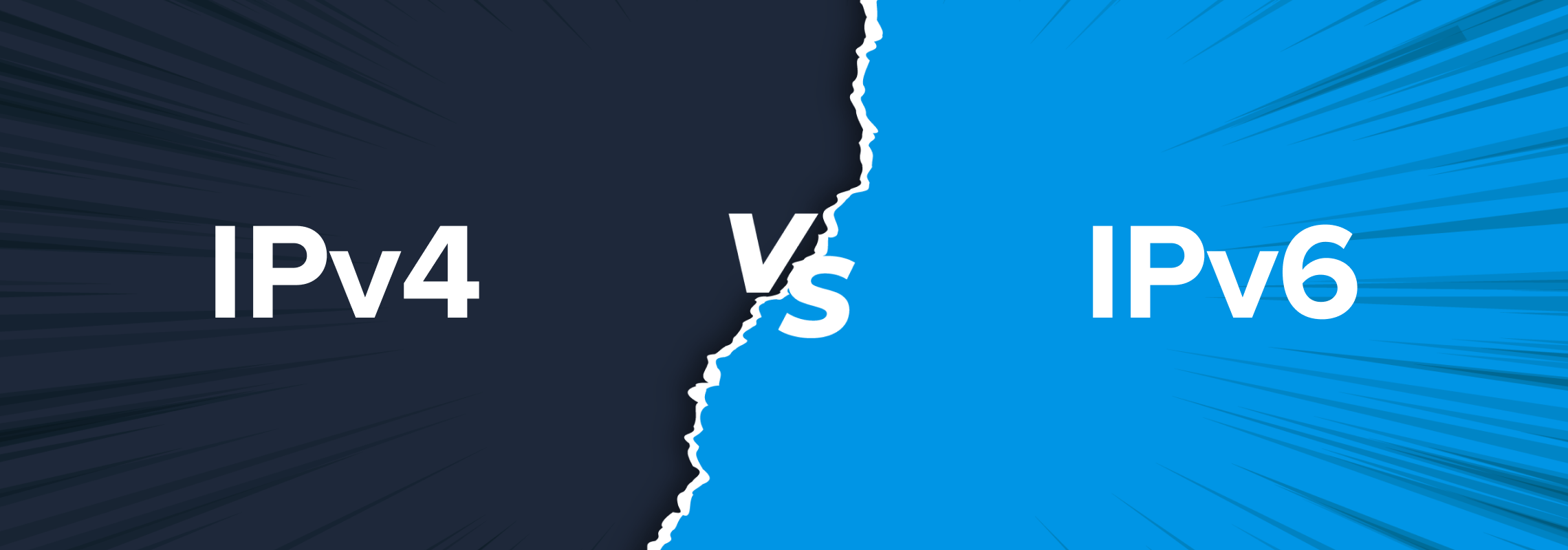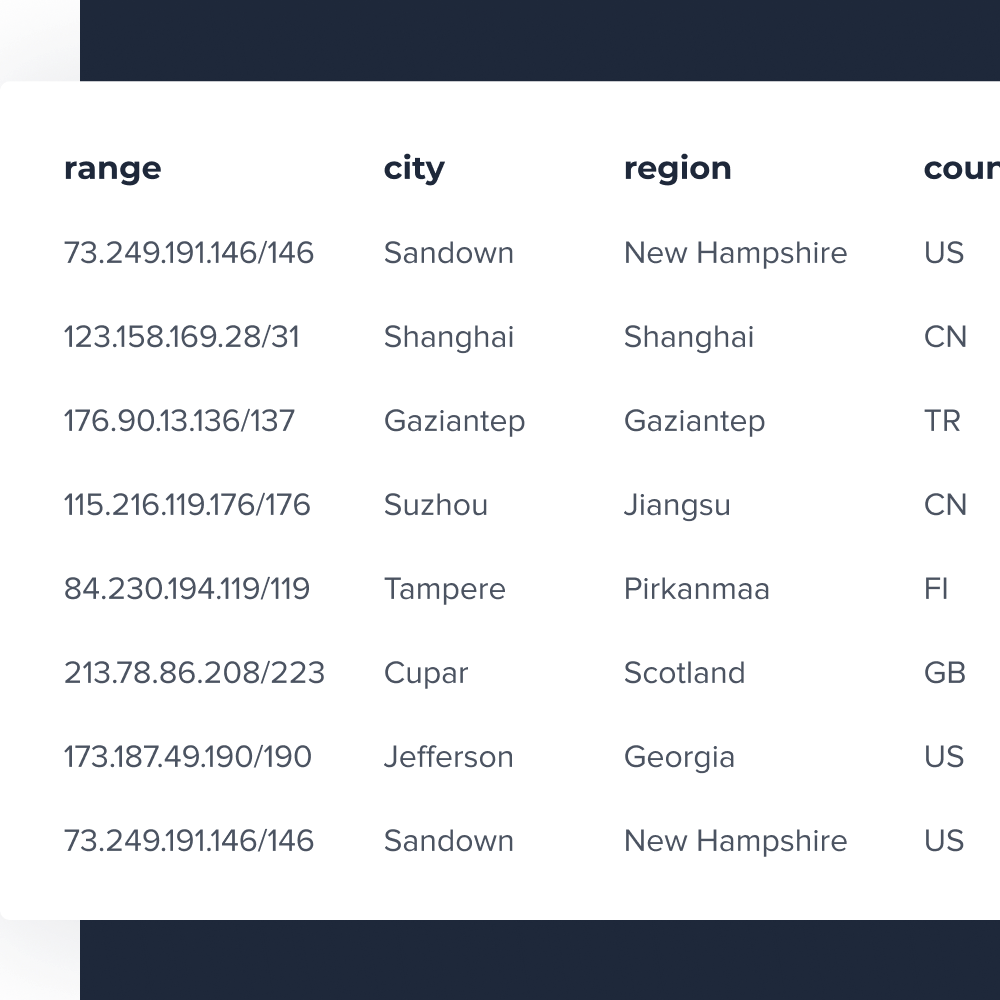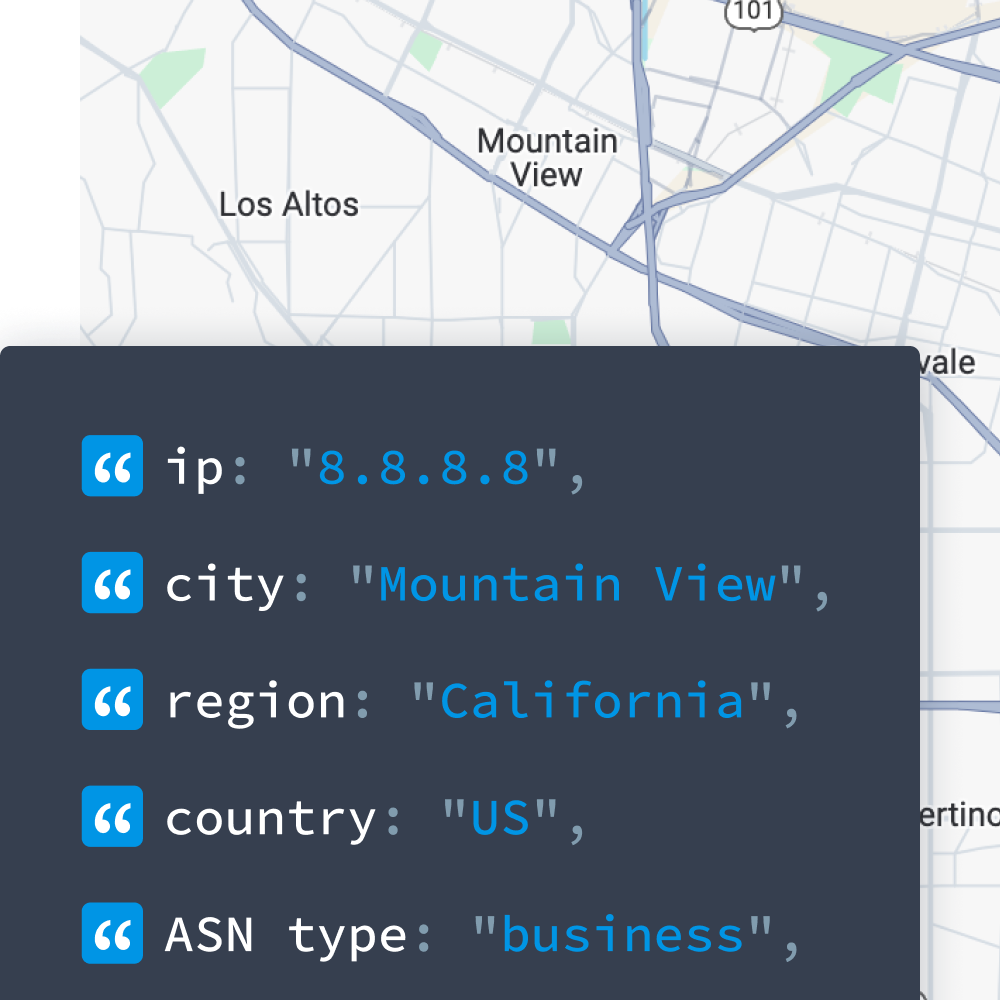 My IP ↗or
My IP ↗orThe internet protocol (IP) is the backbone of modern networking, enabling devices to communicate over the internet. IPv4 has served this role for decades, but its limitations led to the development of IPv6.
With more devices coming online every day – especially as the Internet of Things (IoT) continues to grow – IPv4’s 4.3 billion unique addresses simply aren’t enough to accommodate the global demand. IPv6, with its 128-bit address space, offers virtually unlimited addresses, allowing every device, sensor, and future technology to have its own unique identifier.
Read on to learn more about how IPv4 and IPv6 differ, how moving toward IPv6 will help support technology’s continued evolution, and how IPinfo has embraced the adoption of IPv6 while still supporting IPv4.
What Is an IP Address?
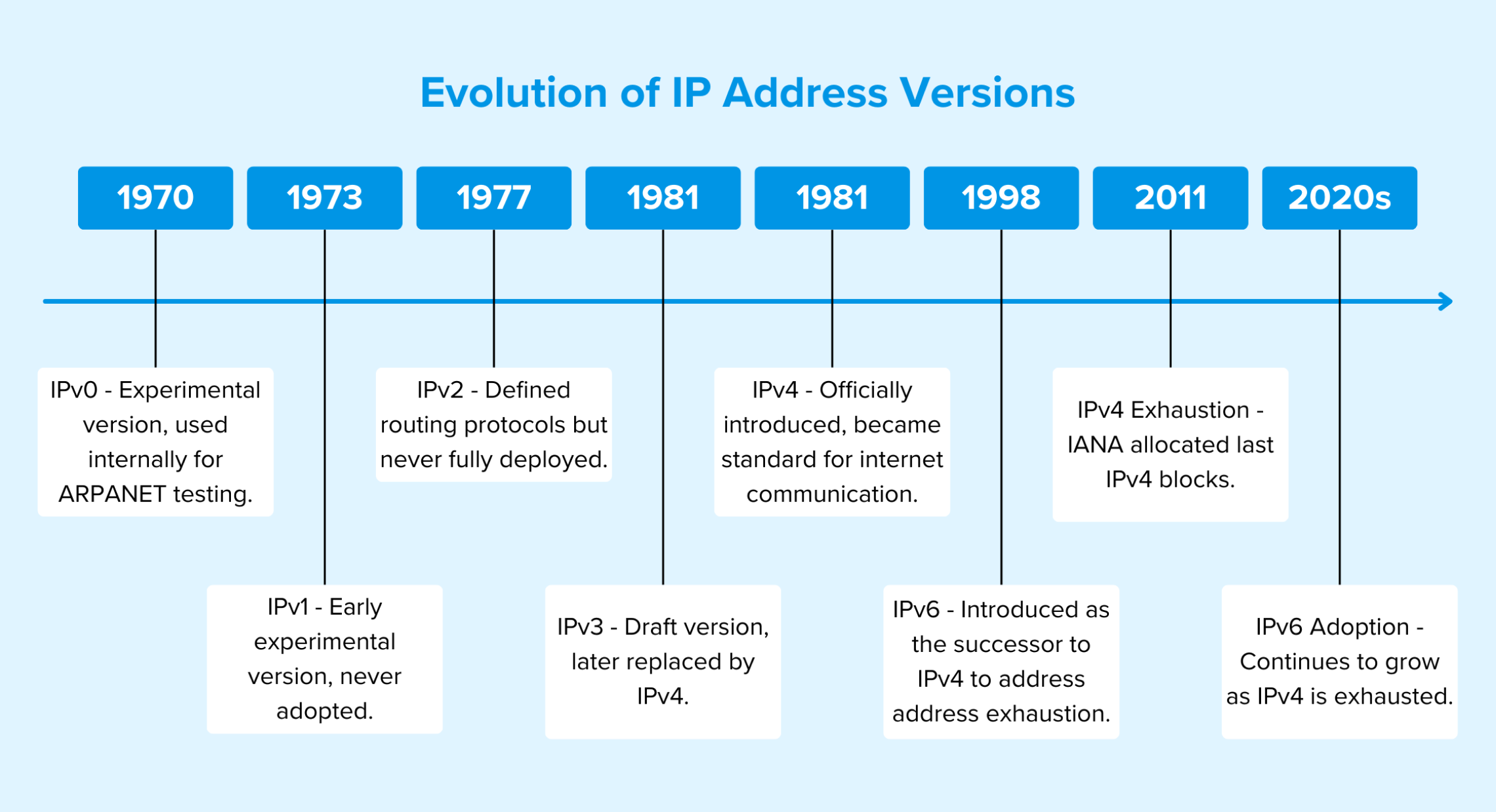
An IP address is a unique identifier assigned to each device connected to a network. It enables devices to locate and communicate with each other over the internet. IP addresses function similarly to postal addresses. Just as a postal address ensures that mail reaches the right recipient, an IP address ensures that data packets arrive at the correct destination. Without IP addresses, devices would have no way of identifying and locating each other on the internet.
Understanding IPv4
Introduced in 1981, IPv4 (internet protocol version 4) is the fourth iteration of the IP protocol and remains widely used today.
Before IPv4, early versions of the internet protocol included IPv0, IPv1, IPv2, and IPv3, developed in the 1970s as part of ARPANET research. These versions were experimental and used internally for testing packet-switched networking concepts. IPv4, introduced in 1981 with RFC 791 (Request for Comments – technical internet standards), became the first widely adopted version.
Fun fact: The largest IPv4 holder is the U.S. Department of Defense (DoD) – It owns over 175 million IPv4 addresses!
IPv4 utilizes a 32-bit address space, allowing for approximately 4.3 billion unique addresses. However, the rapid expansion of the internet has led to IPv4 address exhaustion, prompting the need for workarounds such as network address translation (NAT). For example: imagine a city with a limited number of houses. As more people move in, they start sharing homes (similar to NAT). This workaround works for a while, but becomes inefficient as more residents arrive, leading to overcrowding and logistical challenges.
IPv4 addresses are written in decimal format, divided into four octets:
192.168.1.1
The move from IPv4 to IPv6 is driven by the exhaustion of IPv4 addresses. In 2011, the IANA officially allocated the last blocks. This event pushed IPv6 adoption forward as a necessary solution to accommodate the growing number of internet-connected devices.
Get access to IPinfo’s downloadable IP database
Customize precise geolocation data to meet your specific business requirements.
Understanding IPv6
IPv6 (internet protocol version 6) was developed to overcome IPv4’s limitations. It features a 128-bit address space, enabling an almost limitless number of unique addresses. IPv6 also introduces several enhancements, including better security and simplified network configuration. IPv6 is like designing a massive, well-planned futuristic city where every resident has their own house with room to spare. There’s no need for house-sharing (NAT), and everything runs more smoothly.
IPv6 Facts
With 2^128 addresses (~340 undecillion), IPv6:
- has more addresses than stars.
- could assign a unique address to every grain of sand on Earth.
- could assign trillions of addresses per person.
- has more addresses than Earth’s atoms!
IPv6 addresses use hexadecimal notation and are divided into eight groups of 16-bit values:
2001:0db8:85a3:0000:0000:8a2e:0370:7334
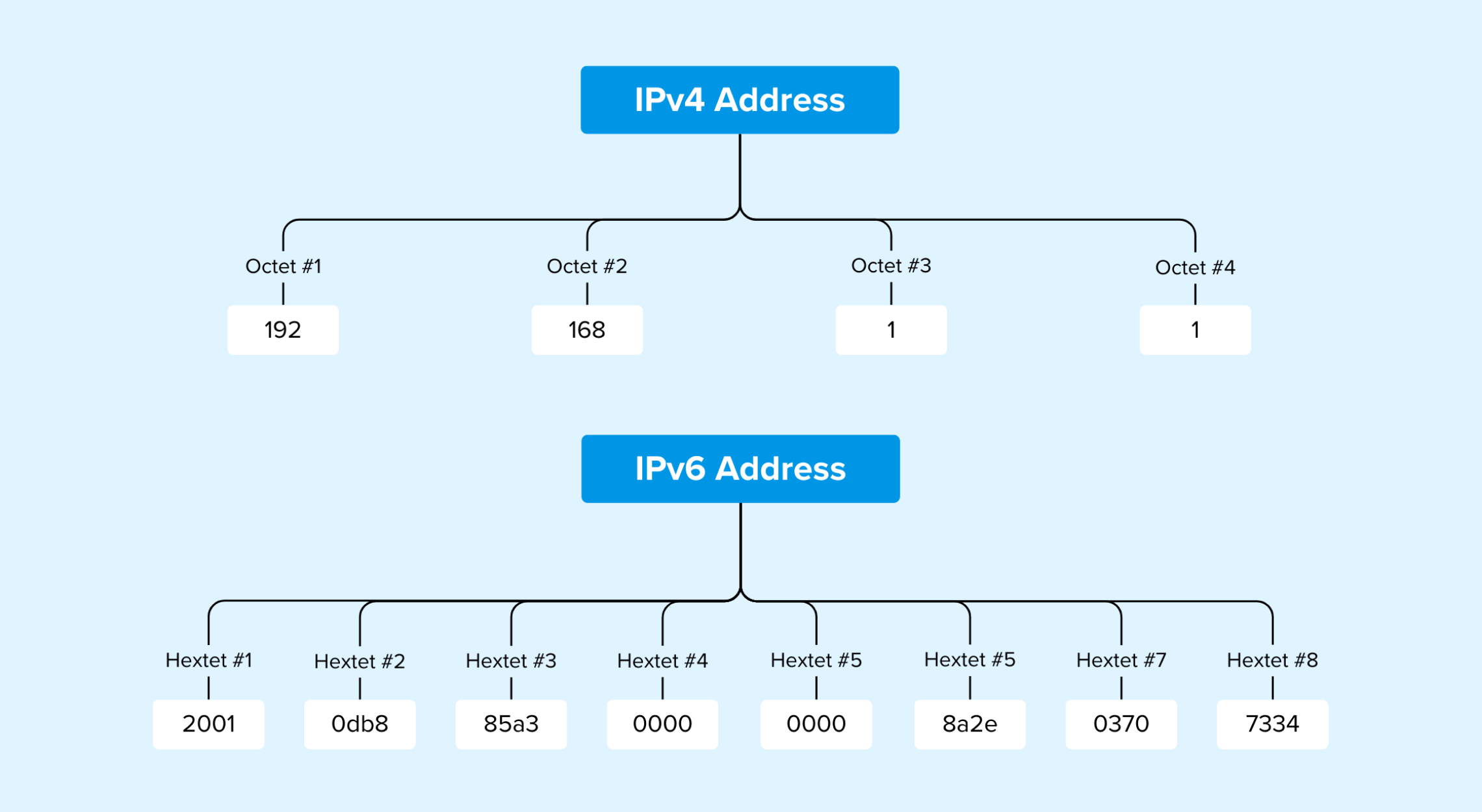
Is IPv4 or IPv6 Superior?
IPv6 is designed to streamline network management by eliminating the need for workarounds like NAT, which can complicate traffic routing and hinder performance.
Adopting IPv6 isn't just about solving address shortages; it's about building a more scalable, efficient, and secure internet that can support the next generation of technology.
IPv4 vs. IPv6 Based on Application
The choice between IPv4 and IPv6 depends on the specific application. For general web browsing, IPv4 is still widely used due to its compatibility. However, IPv6 shines in areas requiring scalability, like the Internet of Things (IoT), where billions of devices need unique addresses. For mobile networks and real-time services, IPv6 offers faster routing and improved performance.
How IPv6 Adoption Can Improve Efficiency
- Reduces Network Complexity: Eliminates the need for NAT, simplifying network management.
- Enhances Performance: Reduces latency and packet loss with more direct routing.
- Future-Proofs Networking: Expands the available address space to support continued internet growth.
Initiatives to Improve IPv6 Adoption
Several global initiatives are in place to accelerate IPv6 deployment:
- Google and Facebook IPv6 Support: Major websites are fully accessible via IPv6, ensuring a smooth transition.
- World IPv6 Launch: An industry-driven event encouraging organizations to enable IPv6 permanently.
- Government Mandates: Many governments require IPv6 adoption for public sector networks.
- ISP and Cloud Provider Push: ISPs and cloud providers are gradually shifting to IPv6-only services, making IPv6 adoption necessary.
- Enterprise Adoption: Companies migrating to IPv6 for better performance, security, and future-proofing their networks.
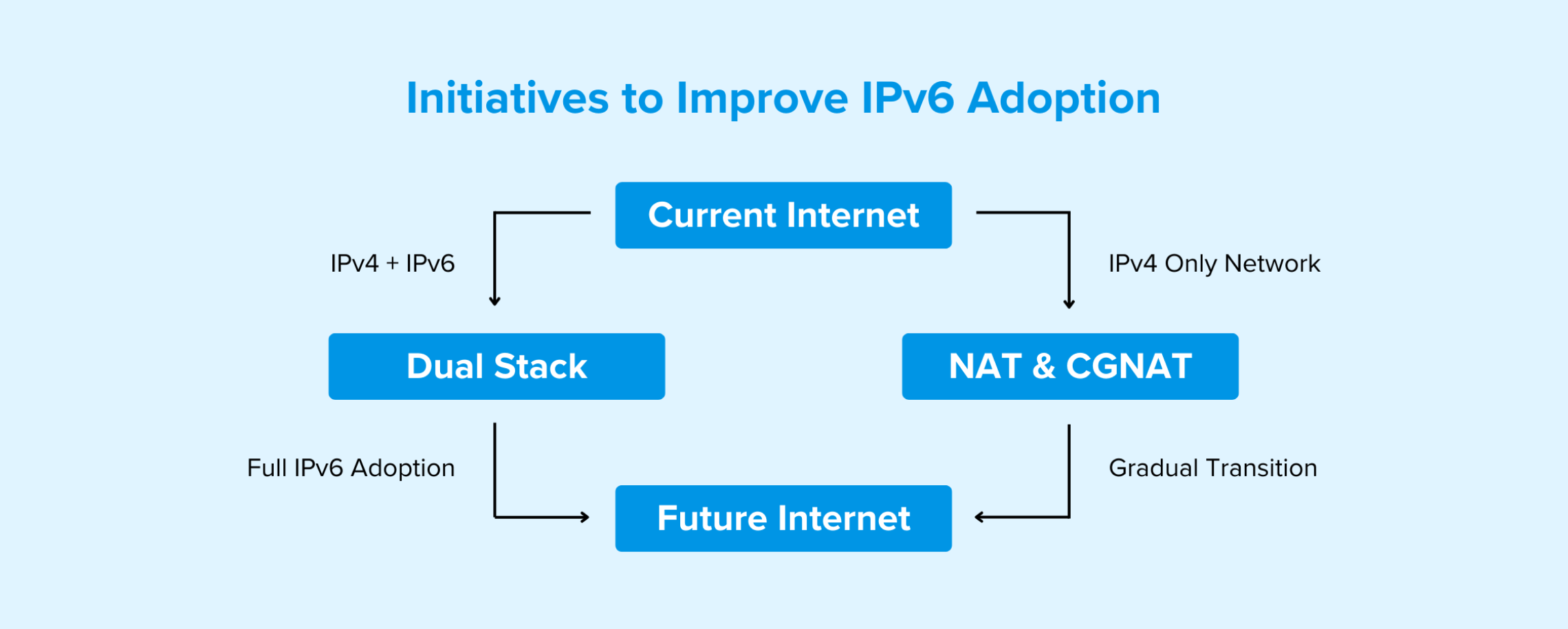
IPinfo and IPv6
IPv6 adaptation has been slow, but IPinfo has quickly adapted to providing IPv6 address information and accepting traffic from IPv6 addresses as well. IPinfo’s website is dual stack. For our API endpoint, visit here if you are assigned an IPv6 address, which is specially built to accommodate IPv6 connections.
The transition from IPv4 to IPv6 is inevitable as the demand for internet-connected devices grows. Think of it as moving from a small, overcrowded city to a well-planned megacity. While challenges remain, IPv6’s enhanced capabilities make it the future of networking. Organizations and ISPs must continue efforts to deploy and support IPv6 to ensure the long-term scalability and security of the internet.
Discover location-based data instantly with IPinfo’s IP address geolocation API
Get instant access to the quickest and most reliable solution for accessing geolocation context.
About the author

Abdullah leads the IPinfo internet data community and he also works on expanding IPinfo’s probe network of servers across the globe.
